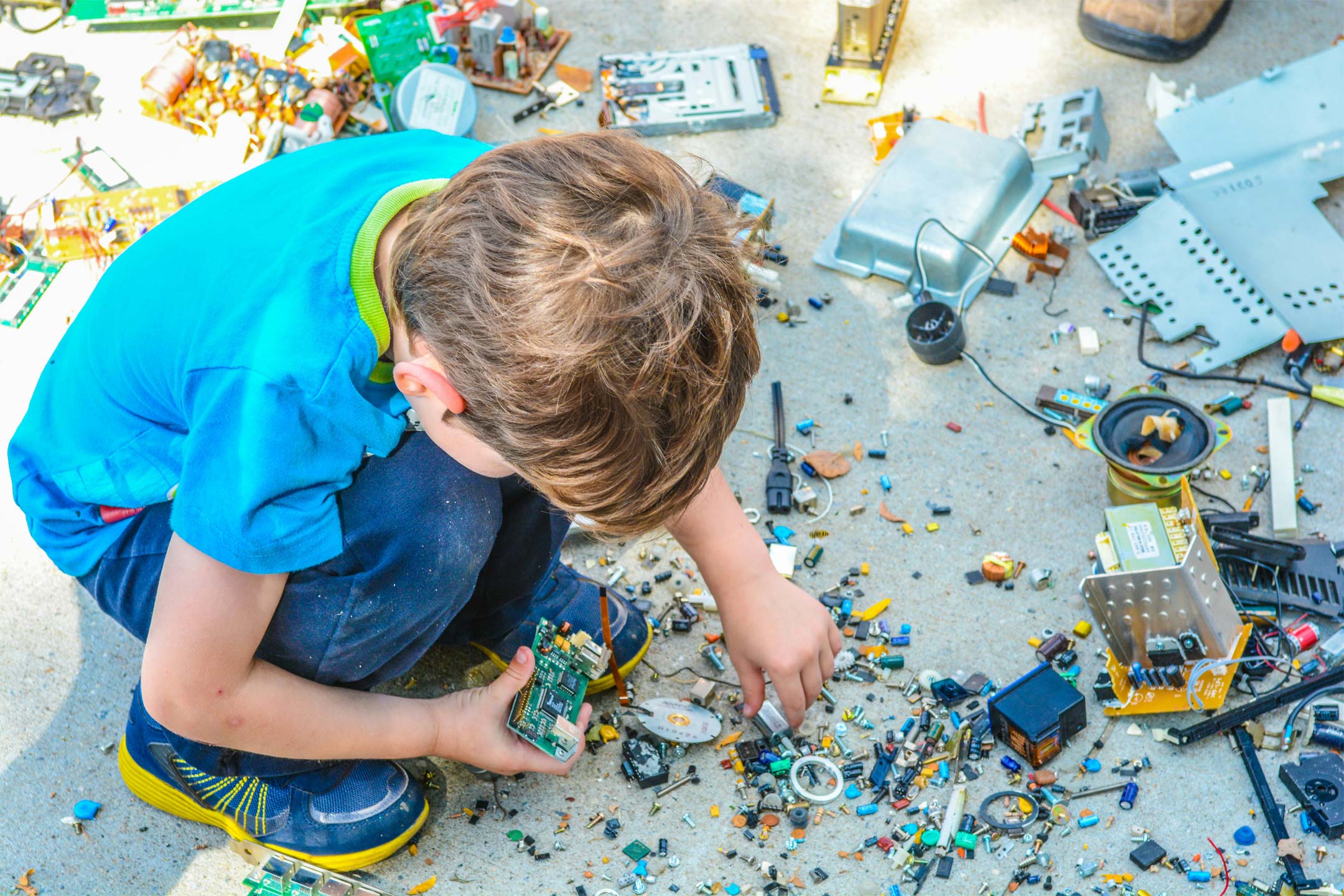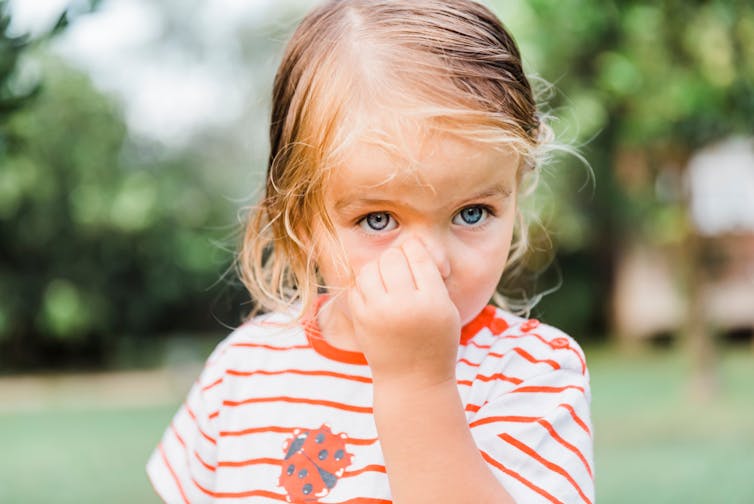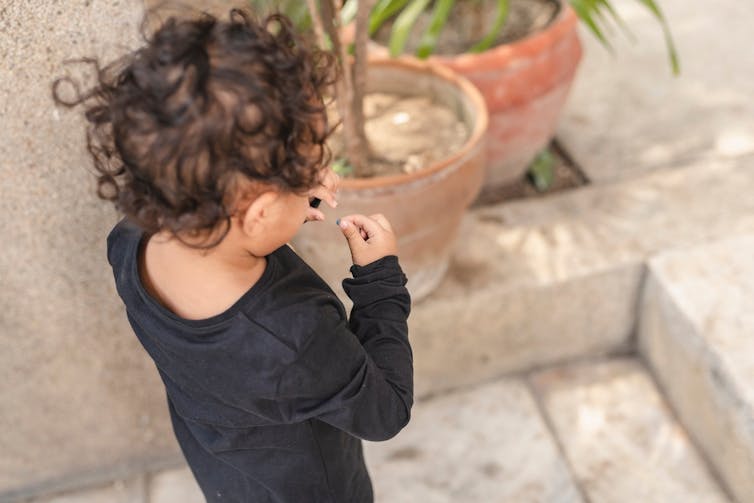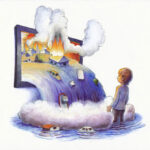
16 Jan 3 reasons why kids stick Lego up their nose
Curiosity is a hallmark of children and a key learning process in the early years, writes Anna Girardi
Children, especially toddlers and preschoolers, have an uncanny ability to surprise adults. And one of the more alarming discoveries parents can make is their child has stuck a small object, such as a Lego piece, up their nose.
Queensland Children’s Hospital recently reported more than 1,650 children with foreign objects up their noses had presented to its emergency department over the past decade. Lego, beads, balls, batteries, buttons and crayons were among the most common objects.
With the Christmas season approaching, it’s likely more of these small objects will be brought into our homes as toys, gifts or novelty items.
But why do children stick things like these up their nose? Here’s how natural curiosity, developing motor skills, and a limited understanding of risk can be a dangerous combination.

1. Kids are curious creatures
Toddlers are naturally curious creatures. During the toddler and preschool years, children explore their environment by using their senses. They touch, taste, smell, listen to and look at everything around them. It’s a natural part of their development and a big part of how they learn about the world.
Researchers call this “curiosity-based learning”. They say children are more likely to explore unfamiliar objects or when they don’t completely understand how they work. This may explain why toddlers tend to gravitate towards new or unfamiliar objects at home.
Unfortunately, this healthy developmental curiosity sometimes leads to them putting things in places they shouldn’t, such as their nose.
2. Kids are great mimics
Young children often mimic what they see. Studies that tracked the same group of children over time confirm imitation plays a vital role in a child’s development. This activates certain critical neural pathways in the brain. Imitation is particularly important when learning to use and understand language and when learning motor skills such as walking, clapping, catching a ball, waving and writing.
Put simply, when a child imitates, it strengthens brain connections and helps them learn new skills faster. Anecdotally, parents of toddlers will relate to seeing their younger children copying older siblings’ phrases or gestures.
Inserting items into their noses is no different. Toddlers see older children and adults placing items near their faces when they blow their noses, put on makeup, or eat and decide to try it themselves.

MDV Edwards/Shutterstock
3. Kids don’t yet understand risk
Toddlers might be curious. But they don’t have the cognitive capacity or reasoning ability to comprehend the consequences of placing items in their nose or mouth. This can be a dangerous combination. So, supervising your toddler is essential.
Small, bright-coloured objects, items with interesting textures, or items that resemble food are especially tempting for little ones.
What can I do?
Sometimes, it’s obvious when a child has put something up their nose, but not always. Your child might have pain or itchiness around the nose, discharge or bleeding from the nose, and be upset or uncomfortable.
If your child has difficulty breathing or you suspect your child has inserted a sharp object or button battery, seek immediate medical care. Button batteries can burn and damage tissues in as little as 15 minutes, which can lead to infection and injury.
If your child inserts an object where they shouldn’t:
- stay calm: your child will react to your emotions, so try to remain calm and reassuring
- assess the situation: can you see the object? Is your child in distress?
- encourage your child to blow their nose gently. This may help dislodge the object
- take your child outside in the Sun: brief exposure for a minute or two might prompt a “Sun sneeze”, which may dislodge the object. But avoid sniffing, which may cause the object to travel further in the airways and into the lungs
- never try to remove the object yourself using tweezers, cotton swabs or other tools. This can push the object further into the nose, causing more damage.
If these methods don’t dislodge the item, your child is not distressed, and you don’t suspect a sharp object or button battery, go to your GP. They may be able to see and remove the item.
Prevention is better
Preventing these incidents starts with keeping small, shiny, tempting objects out of reach of children and teaching them not to place objects in their noses or mouths.
Supervision is key. Parents and caregivers can also be stringent about what they bring into their homes. If there’s an alternative item, for example, a similar product that doesn’t need a button battery, consider buying that instead.
Curiosity is a hallmark of children and a key learning process in the early years. However, this curiosity, combined with a limited ability to identify danger, can be a risky combination. With awareness of the dangers, supervision, and appropriate action when incidents happen, parents can keep their children safe while they explore the world.![]()
Anna Girardi, Lecturer in Speech Pathology and Researcher at the Centre for Health Research, University of Southern Queensland
This article is republished from The Conversation under a Creative Commons license. Read the original article.




